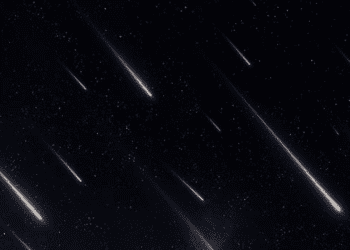NASA has released a stunning 3D video showing what it would look like to fly through the famous 'Pillars of Creation' nebula.
The very first images of the nebula, located around 6,500 light-years from Earth, were captured by the Hubble Space Telescope and released in 1995.

Nasa has now combined the data from both Hubble and Webb to create a breathtaking 3D interpretation of a flight through the nebula.[/caption]

The James Webb Telescope, which launched on Christmas Day in 2021, has been able to capture even more vivid snaps of the nebula.[/caption]

While it was first pictured in 1995, the 'Pillars of Creation' nebula was actually first discovered in 1920.[/caption]
The aging Hubble Space Telescope has been joined by the $10 billion James Webb Telescope, which is widely considered to be the most powerful telescope ever built.
The James Webb Telescope, which launched on Christmas Day in 2021, has been able to capture even more vivid snaps of the nebula.
Nasa has now combined the data from both Hubble and Webb to create a breathtaking 3D interpretation of a flight through the nebula.
What is the Hubble Space Telescope?
Here's what you need to know…
- The Hubble Space Telescope is a telescope that captures images while in space
- It was launched into a low-Earth orbit in 1990 and is still fully operational
- The advantage of Hubble is that it takes photos from outside of Earth's atmosphere
- This means distortion from the atmosphere is removed, allowing for more accurate image capture
- Nasa's Hubble has captured some of the most detailed images of space ever recorded
- The Hubble telescope was also able to accurately determine the rate at which the universe was expanding
- Hubble is also the only telescope that was designed to be serviced by astronauts in space
- Five different missions have been launched to repair, upgrade or replace parts of the Hubble telescope
- It's believed that the Hubble telescope could continue working until 2040
- But its successor – the James Webb Space Telescope – already launched in December 2021
'Elephant trunks'
The 'Pillars of Creation' exists within the large Eagle Nebula, a young open cluster of stars in the constellation Serpens, that was discovered sometime between 1745 and 1746.
While it appears angelic, the nebula is actually made up of huge amounts of interstellar gas and dust.
For context, the Eagle Nebula is about 90 trillion kilometers long.
All of those 'bits' come together to form these giant interstellar matter formations, known as elephant trunks.
But because the nebulae are made of dust, they are constantly being worn away by strong interstellar winds and ultraviolet radiation.
While it was first pictured in 1995, the 'Pillars of Creation' were actually first discovered in 1920.
It was spotted by American astronomer John Charles Duncan more than 100 years ago, while using the 60-inch telescope at the Mount Wilson Observatory.
The Eagle Nebula is so gargantuan it can even be seen through a small telescope or binoculars, when the conditions are just right.
The best time to see it is in July.
However, it certainly won't be the same view as what Nasa has provided in the video above.
All you need to know about planets in our solar system
Our solar system is made up of nine planets with Earth the third closest to the Sun. But each planet has its own quirks, so find out more about them all…
- How old is Earth? Plus other facts on our planet
- How many moons does Mercury have?
- What color is Venus?
- How far away is Mars to Earth? And other facts on the red planet
- How big is Jupiter?
- How many moons does Saturn have?
- Does Uranus have rings?
- How many moons does Neptune have?
- How big is Pluto?
- How hot is the Sun?































